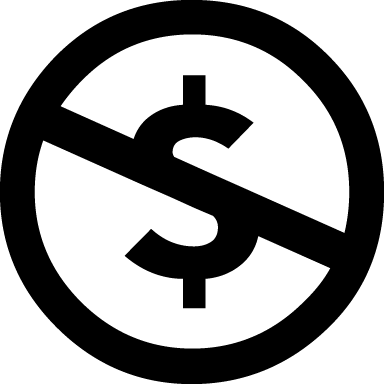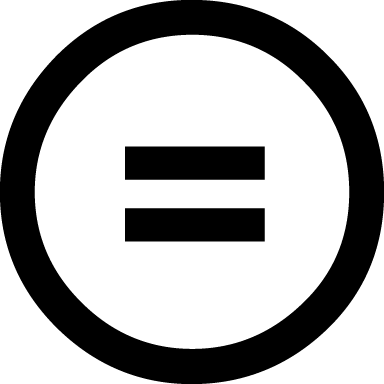Copyright and Licensing
Managing Copyrights & Negotiating Publishing Agreements
You’ve put a tremendous amount of work into your research and writing. As you get ready to publish, it’s important to think both short- and long-term about how you want to use your work, including what rights you wish to retain versus those you’re comfortable transferring to a publisher.
Once you’ve written an article or a book, you will generally have to sign an agreement with a publisher before it gets published. The terms of these agreements vary widely, and control how you can use your own work later (including on your own websites, or in your own scholarship or classrooms). So, it’s in your best interests as an author to read them carefully and try to negotiate changes when necessary.
This section provides a workflow for you to help you with negotiating publishing agreements. You are also welcome to contact the Open Initiatives & Scholarly Communication unit at scholarlycommunication@ou.edu.
What does ownership mean?
On Berkeley's Copyright Basics page you will find that having "copyright" means that you have the right to make certain exclusive uses of your work for a limited period of time (though of course subject to others' ability to make fair uses of your work, or exercise other statutory exemptions).
Those exclusive rights include:
- Reproduction
- Preparation of derivative works (such as adaptations)
- Distribution
- Public performance
- Public display
- Public performance of sound recordings via digital audio transmission
You can grant permission (or a "license") to others to make certain but not all such uses. For instance, you can grant a publisher the right to make reproductions and distribute your work, but not to publish derivative works based upon it (like translations, or audio versions).
And, you can decide to grant these licenses non-exclusively or exclusively. In other words, you can grant someone the exclusive right of reproducing your work, but if you do, that might mean you can no longer reproduce it yourself unless you carve out this right in the agreement!
If your work is jointly authored, you can grant only non-exclusive rights to others unless you have the consent of all authors (see the UC Copyright Guide's section on Jointly Authorship and Collective Works for an explanation of this).
What is your publisher asking for?
Typically, journals’ publishing agreements will ask that you transfer or license your copyrights without compensation. The value (or “consideration,” in legal terms) that you gain in exchange for conveying a transfer or license is that you’re being published in a prestigious journal, which also carries the potential for gaining scholarly impact. The value the publisher gains is being able to control how your work is published, and in setting the terms and conditions for others to access the work (e.g. subscription prices, online access).
In the case of scholarly books, the publishing agreement transfer or license will typically involve a monetary transaction: You receive a lump sum or royalties based on how many books are sold, and the publisher receives rights to control the price of the books (if they’re not open access), the manner and terms of how the book is published, whether new editions or translations are created, etc.
Publishing agreements can differ in so many ways. For instance:
- They might ask for rights only for publishing in certain types of media (e.g. print books but not eBooks), or for certain periods of time or editions.
- One publisher’s agreement may ask you to transfer all of the six exclusive rights you hold, or an agreement might not be asking for a transfer at all, but instead merely license to certain of your rights “bundle” on an exclusive basis.
- Sometimes with journals, the “exclusivity” period is only for 6 mos. or a year, after which point you’re able to post copies of the work on other sites or use it in other ways.
So, you’ll need to review the terms of your agreement carefully. As we discuss below, it’s really worth it to spend the time digging in to what you’re being asked to confer.
What do you want to agree to?
To determine whether you’re comfortable with the terms of the transfer or license, it may be helpful to start by thinking about both your short- and long-term goals for the work.
Remember, if you transfer your copyright in toto to a publisher, you are providing them with all your exclusive rights. You may even be asked to sign away rights to make uses that would otherwise be "fair."
This could result in downstream frustration for you if, for instance:
- You later desire to have your book published as an eBook, or for a copy to be made available open access with a Creative Commons license, but you have assigned all copyright to your publisher.
- Or perhaps you wish to commission a translation, but your publisher now holds these rights.
- Depending on how similar subsequent articles are to your original, even these might count as “derivative works”—as to which the right to create may have been assigned to your publisher.
- Indeed, some agreements prohibit you from posting a copy of the publisher version of the final article to your personal or departmental website. If you wish to do so, you would have needed to get this right added to the agreement in advance.
Assessing your future intentions before you sign your agreement will better position you to be able both to understand and negotiate the rights or licenses they’ve asked you to confer.
What Are Your Negotiating Options?
Once you figure out what future uses you do or might want to make from your work, you can explore what options you have to preserve necessary rights. It may not always be possible to successfully negotiate changes to your publisher’s agreement. But, it’s often worth trying.
Generally speaking, there are a few main approaches you could take:
Transfer Your Copyrights But Reserve Certain Rights or Licenses for Yourself
- If you already know exactly what kinds of uses you want to make—such as posting to a personal or departmental website, making a later derivative work such as a translation, etc.—then you can try expressly adding or building in this planned use into the agreement. One way to do this is by adding language like the following after the sentences or paragraphs in which transfer occurs: “Notwithstanding the foregoing…” or “Except that nothing in this paragraph shall limit [author’s name] right to…,” and then specifying the rights you wish to retain. Likewise, if you’re being asked to provide “exclusive” rights that would prohibit you from making certain uses of your own work that you know you want to make, you may wish to strike this language and insert “non-exclusive” for these particular rights.
- You can also expressly include what are called “reversion” or “out-of-print” clauses. These clauses assign copyright to a publisher for only as long as the work is still “in print”—after which point, copyright reverts to the author. Of course, agreements differ in how they define out-of-print, and there’s a great FAQ section by the organization Authors Alliance that discusses this. Reversion clauses can be incredibly useful to ask for if they are not already built into your agreement, because they streamline the process for getting your rights back if the publisher decides, for instance, to stop publishing your book. The reversion clauses will probably differ in terms of the “triggering” event, and the steps you must take to exercise your reversion right once the triggering event has occurred.
Retain Copyrights But Grant Certain Licenses to the Publisher
- Alternatively, you might be able to negotiate for retaining your copyright and instead granting certain exclusive licenses to your publisher. Some publishers may be satisfied with, for instance, being given “exclusive worldwide first publication rights” in certain or all languages. Granting a “first publication” license can mean you get to keep rights to do other things with your work, such as posting copies to your website, creating adaptations or books that incorporate the original manuscript, etc.
Understanding Licensing
If you're about to self-publish on a website or sign a publishing agreement, you may want to think about how to manage your copyrights, and what rights you want to keep or grant to others.
This section provides information about what licensing options are at your disposal. For instance, what if you want to share your research online for others to read and build from, but don't want anyone to utilize it commercially? You'll want to know how indicate these restrictions in the license you grant.
Here, we explain common licensing options and a straightforward way to think about them. Remember, we cannot give legal advice. But what we can and do offer our tools to help you approach thinking about licensing and managing your rights.
Consider What You Want to License and to Who
Berkeley's Copyright Basics page explains that having "copyright" means holding the right to make all of the following exclusive uses of your work for a certain period of time (of course, subject to others' rights to make fair uses or rely upon other statutory exemptions):
- Reproduction
- Preparation of derivative works (such as adaptations)
- Distribution
- Public performance
- Public display
- Public performance of sound recordings via digital audio transmission
You can grant permission (or a "license") to others to make certain but not all such uses. For instance, you can grant someone the right to make copies of your manuscript for a class, but not "publicly display" it by posting them online on the open Web.
And, you can decide to grant these licenses non-exclusively or exclusively. In other words, you can grant someone the exclusive right of reproducing your work, but that might mean you can no longer reproduce it yourself! If your work is jointly authored, you can grant only non-exclusive rights to others unless you have the consent of all authors (see the UC Copyright Guide's section on Jointly Authorship and Collective Works for an explanation of this).
Choosing or Accepting a License
Now that you have decided what rights you want to grant, it's time to choose a license for materials you're self-publishing or posting, or determine whether to accept the licensing terms in a publisher's agreement. (If a publisher is instead asking you to transfer all copyrights, then you'll want to think about what rights you essentially want to "grant back" or "license back" to yourself.)
When it comes to selecting licenses, we recommend using a "pre-fabricated" license for your works--that is, one that has been drafted and vetted by legal teams, rather than one you develop, yourself.
Perhaps the most useful and easy-to-apply options are Creative Commons licenses, labels, & designations. (Note that for computer software, the Open Source Initiative has posted sample "open source" software license agreements that function similarly to Creative Commons licenses.) We explain these Creative Commons licenses, labels, and designations below.
Side note: We know what "licenses" are, but what do we mean by "labels" or "designations"? Well, some of the Creative Commons marks aren't actually licenses, because they instead are ways for you to disclaim copyright or label the materials as being in the public domain. They're not technically licenses because you're not really holding certain rights and granting rights to others; rather, they are affirmations that no copyrights apply or are being claimed.
Creative Commons Licenses
Creative Commons licenses allow copyright owners to retain copyright while allowing others to copy, distribute, and make some uses of their work--either commercially or not, depending on the copyright owner's preference and license. Creative Commons licenses also specify that licensors get credit for their work.
Creative Commons offers a Choose Your License Tool that asks you a few questions about what you want to let others do, and then reveals which license meets your stated needs. The Choose Your License Tool essentially allows you to select between combinations of all the following parameters (and our excerpted descriptions below are from the Creative Commons Licensing Types page):
 Attribution (BY): "All CC licenses require that others who use your work in any way must give you credit the way you request, but not in a way that suggests you endorse them or their use."
Attribution (BY): "All CC licenses require that others who use your work in any way must give you credit the way you request, but not in a way that suggests you endorse them or their use."
 Noncommercial (NC): "You let others copy, distribute, display, perform, and (unless you have chosen NoDerivatives) modify and use your work for any purpose other than commercially unless they get your permission first."
Noncommercial (NC): "You let others copy, distribute, display, perform, and (unless you have chosen NoDerivatives) modify and use your work for any purpose other than commercially unless they get your permission first."
 No Derivative Works (ND): "You let others copy, distribute, display and perform only original copies of your work. If they want to modify your work, they must get your permission first."
No Derivative Works (ND): "You let others copy, distribute, display and perform only original copies of your work. If they want to modify your work, they must get your permission first."
 Share Alike (SA): "You let others copy, distribute, display, perform, and modify your work, as long as they distribute any modified work on the same terms. If they want to distribute modified works under other terms, they must get your permission first."
Share Alike (SA): "You let others copy, distribute, display, perform, and modify your work, as long as they distribute any modified work on the same terms. If they want to distribute modified works under other terms, they must get your permission first."
Example:
So, for instance, a CC BY-ND license allows for redistribution, commercial and non-commercial, as long as the work is passed along unchanged and in whole, and with credit to you. To actually apply the license, you can put either the image or the legal code (CC BY-ND 4.0) somewhere on your work, like this: 
This work is licensed under a Creative Commons Attribution-NoDerivatives 4.0 International License.
Creative Commons Labels and Descriptions
There are two applications of Creative Commons marks that are not "licenses" because you are not claiming copyright. Rather, you are affirming the opposite--that either the work has entered the public domain (Public Domain Mark, or PDM), or you might hold copyright but are nevertheless dedicating your work to the public domain (Creative Commons Zero, or CC0).
 Public Domain Mark
Public Domain Mark
The PDM is intended for use with works that are already free of known copyright restrictions throughout the world. PDM is not legally operative in any respect – it is intended to function as a label, marking a work that is already free of known copyright restrictions. It is not recommended for use with works that are in the public domain in some jurisdictions if they also known to be restricted by copyright in others.
 Creative Commons Zero Designation
Creative Commons Zero Designation
The CC0 designation is a way for you to designate your work to the public domain--that is, disclaiming any copyright that you might otherwise hold in the work. As Creative Commons FAQs explain, "Once the creator or a subsequent owner of a work applies CC0 to a work, the work is no longer his or hers in any meaningful sense under copyright law. Anyone can then use the work in any way and for any purpose, including commercial purposes, subject to other laws and the rights others may have in the work or how the work is used. Think of CC0 as the 'no rights reserved' option."
Creative Commons offers a chart comparing the attributes of CC0 and PDM.
Back to Top